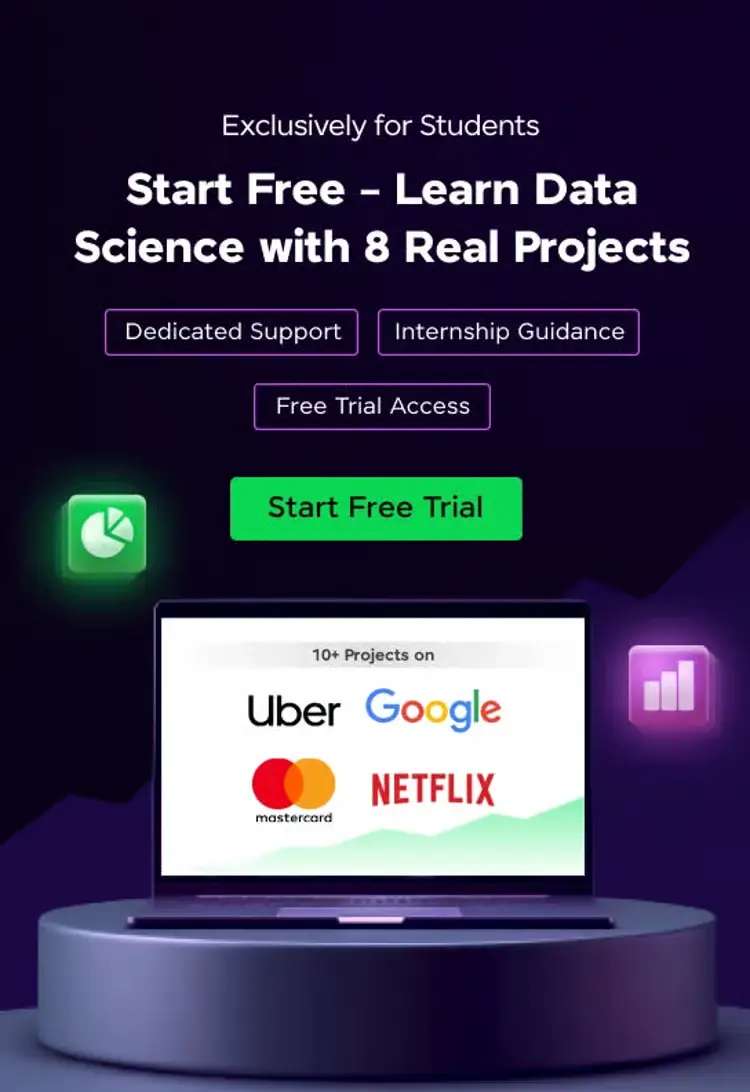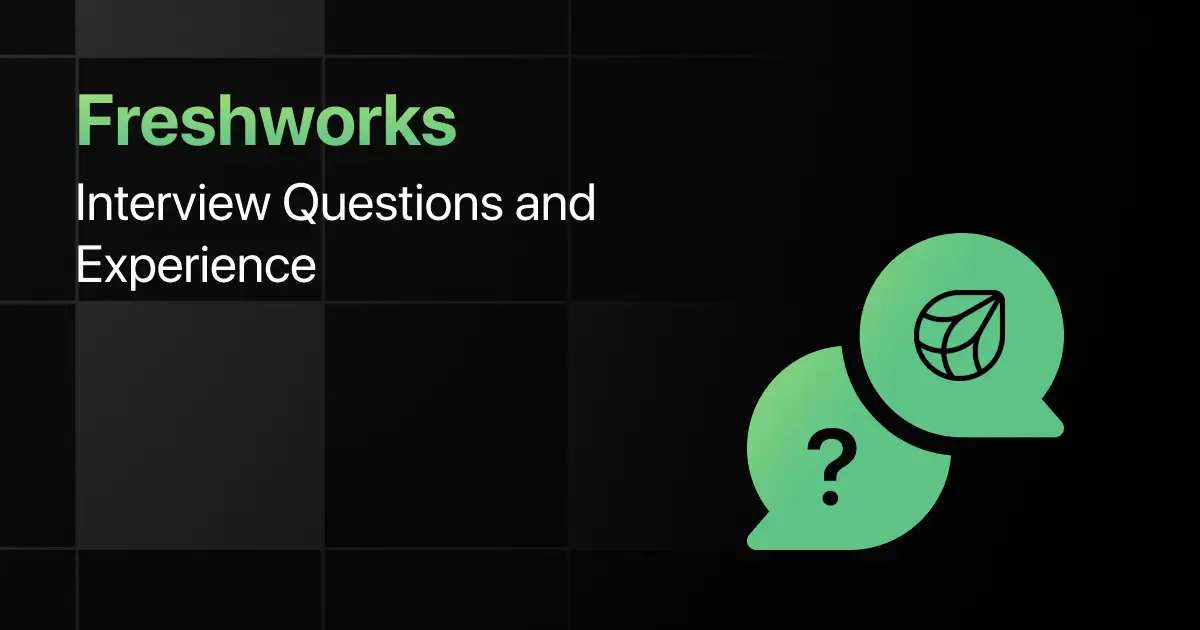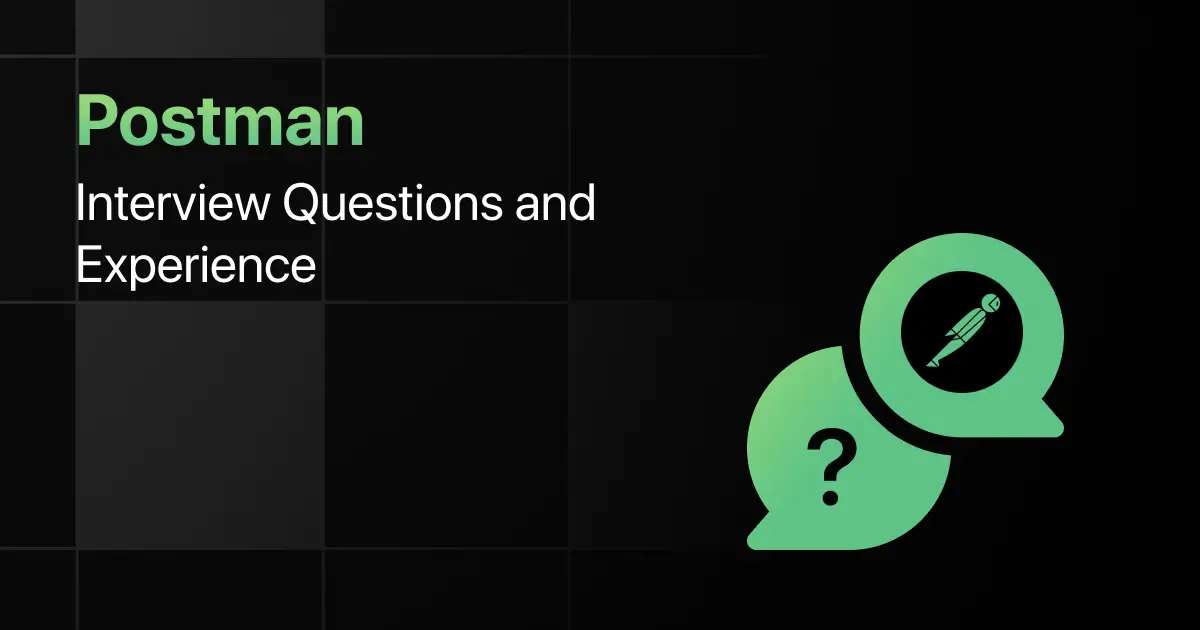Uber Interview Questions and Experience
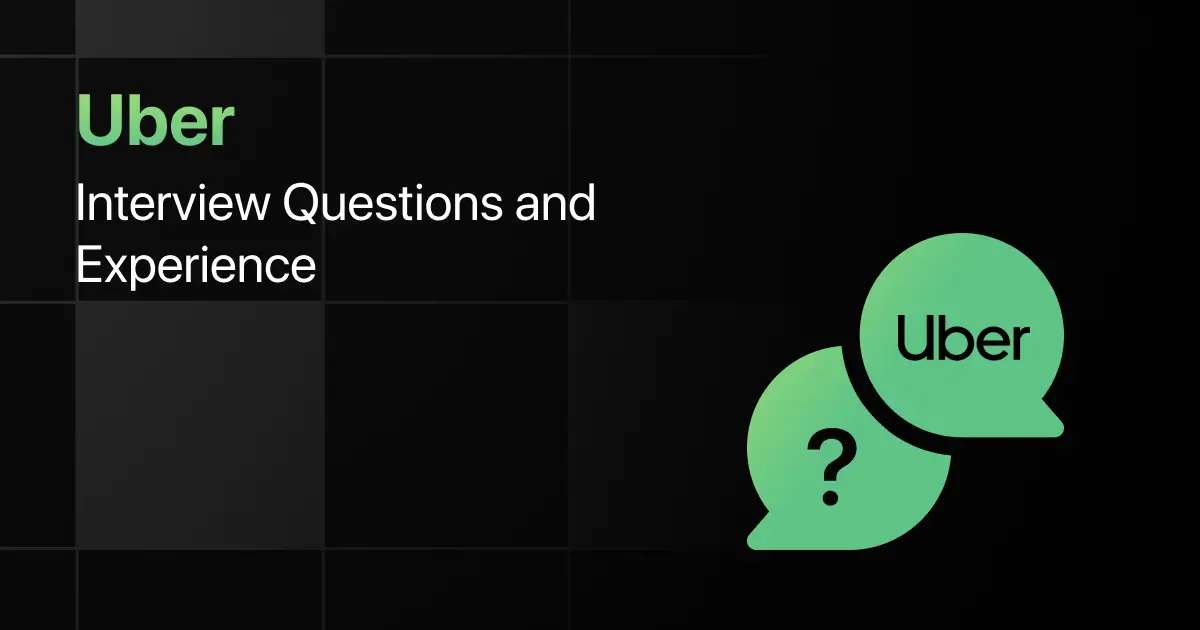
Have you ever wondered what it takes to crack an interview at Uber, one of the world’s leading ride-hailing and tech companies?
Uber is known for its fast-paced work culture, innovative problem-solving environment, and challenging interview process that tests both technical expertise and behavioral fit.
In this blog, we’ll walk you through Uber’s hiring process, commonly asked interview questions, real candidate experiences, and preparation tips to help you succeed.
Uber Hiring Process – Overview
Here’s a quick overview of Uber’s hiring process:
| Category | Details |
|---|---|
| Eligibility | Open to both freshers and experienced candidates. Preferred degrees include Computer Science, Information Technology, Engineering, and related fields.. |
| Rounds | Typically 4–5 rounds: Online Assessment (coding + aptitude), Technical Interviews (2–3 rounds covering DSA, system design, domain knowledge), and HR/Behavioral round. |
| Job Roles Offered | Software Engineer, Data Analyst, Data Scientist, Backend Engineer, Product Manager, Operations Specialist. |
| Salary Range | Freshers: ₹10 – ₹18 LPA (Glassdoor, AmbitionBox). Experienced: ₹25 – ₹60 LPA depending on role and experience (Glassdoor, AmbitionBox). |
| Apply Link | Apply Now |
Top Uber Interview Questions
Uber’s interview process is designed to evaluate a candidate’s problem-solving ability, technical depth, and role-specific knowledge. Below, we’ve compiled some of the most frequently asked Uber interview questions along with sample answers to help you prepare effectively.
1. Technical Questions
- Explain the difference between process and thread.
A process is an independent execution unit with its own memory, while a thread is a lightweight execution unit within a process that shares the same memory space. - What is a hash map and how does it work internally?
A hash map stores data in key-value pairs. It uses a hash function to calculate the index for storing values in buckets. Collisions are managed using chaining or open addressing. - Describe Uber’s surge pricing algorithm in simple terms.
It increases ride fares when demand exceeds supply, encouraging more drivers to come online and balancing demand with available resources. - Explain deadlock in operating systems.
Deadlock occurs when processes are stuck waiting on each other’s resources, preventing further execution. - What is CAP theorem in distributed systems?
It states that a distributed system can only provide two out of three guarantees: Consistency, Availability, and Partition Tolerance. - What is memoization in dynamic programming?
Memoization is a technique of storing intermediate results of expensive computations so they can be reused instead of recalculated. - What are microservices and why are they important at scale?
Microservices divide applications into smaller, independent services that communicate through APIs, improving scalability, modularity, and fault isolation. - What is the difference between TCP and UDP? Where would Uber use each?
TCP ensures reliable communication and is used in payment systems. UDP is faster and suitable for live tracking, where minor data loss is acceptable. - What is load balancing and how does Uber apply it?
Load balancing distributes requests across multiple servers, ensuring no single server is overwhelmed and improving system reliability. - What are the key differences between SQL and NoSQL databases?
SQL databases are relational, structured, and use predefined schemas. NoSQL databases are non-relational, flexible, and better suited for handling large-scale, unstructured data. - What is latency, and how can it affect a ride-hailing system?
Latency is the time taken for data to travel from source to destination. In Uber, high latency could lead to delays in ride requests, driver updates, or live tracking. - Explain the importance of caching in large-scale systems.
Caching reduces response time by storing frequently accessed data temporarily, which helps Uber handle millions of requests efficiently.
2. Role-Based Questions
For Freshers (Software Engineer / SDE 1)
- What is the time complexity of binary search and why is it efficient?
It is O(log n) because the search space is halved in every step, making it highly efficient for sorted datasets. - Explain the four principles of object-oriented programming.
Encapsulation, Abstraction, Inheritance, and Polymorphism — these principles help design reusable and scalable software systems. - Why do you want to join Uber?
Uber works on real-world large-scale systems, offering opportunities to solve global challenges in mobility, scalability, and customer experience. - What are the main challenges you expect as a fresher in Uber?
Adapting quickly to large-scale distributed systems, working with complex architectures, and collaborating effectively in cross-functional teams.
For Data Analyst
- What is the difference between INNER JOIN and LEFT JOIN in SQL?
INNER JOIN returns only matching rows, while LEFT JOIN returns all rows from the left table and matches from the right. - How would you handle missing data in a dataset?
By removing rows, filling with mean/median values, or applying predictive imputation depending on the context. - How would you analyze driver performance data?
By measuring trip ratings, cancellations, ride duration, punctuality, and customer feedback to identify improvement areas. - What metrics would you use to measure Uber’s business performance?
Active users, completed trips, average trip fare, driver utilization rate, and revenue per user.
For Data Scientist / ML Engineer
- What machine learning approach would you use for ETA prediction?
Regression models like Gradient Boosting or deep neural networks, since they handle complex, non-linear relationships in traffic and trip data. - Explain overfitting and ways to prevent it.
Overfitting happens when a model memorizes noise instead of patterns. It can be prevented using regularization, pruning, or cross-validation. - How does Uber detect fraudulent activities?
By applying anomaly detection, classification algorithms, and monitoring unusual usage or payment patterns. - What features would you consider for predicting ride cancellations?
Distance, pickup delays, surge pricing, driver rating, ride history, time of day, and weather conditions.
For Managerial Roles (Engineering Manager / Operations Manager)
- How do you resolve conflicts in your team?
By encouraging open communication, identifying the root cause, and ensuring collaborative resolutions while maintaining fairness. - How do you prioritize new features when resources are limited?
By using frameworks like RICE or MoSCoW, and aligning with business impact and customer value. - How would you manage a critical system outage during peak hours?
By activating incident response protocols, allocating resources, communicating updates transparently, and conducting post-incident analysis.
3. Behavioral Questions
- Tell me about a time when you had to work in a team to solve a difficult problem.
During my final year project, our team faced frequent conflicts on technical decisions. I took the initiative to organize structured discussions where everyone’s ideas were considered, and we combined the best approaches. This helped us deliver the project on time with improved quality. - How do you handle disagreements with your manager or team lead?
I prefer to approach disagreements respectfully by presenting data or examples to support my perspective. At the same time, I remain open to their feedback and ready to align with the final decision for the team’s success. - Describe a situation where you had to adapt quickly to changes.
In my internship, project requirements changed midway. I quickly adjusted by learning new tools and re-prioritizing tasks. This flexibility helped me contribute effectively despite the shift in goals. - How do you prioritize tasks when working under tight deadlines?
I break down tasks into smaller units, identify critical dependencies, and focus on high-impact items first. I also keep stakeholders updated to avoid last-minute surprises. - Give an example of a time when you showed leadership without having a formal title.
As part of a hackathon team, I wasn’t the leader, but I coordinated responsibilities, ensured everyone was aligned, and encouraged team members to contribute. This led us to win the second prize. - How do you ensure clear communication when working with cross-functional teams?
I make it a point to clarify goals at the start, use simple and structured updates, and confirm understanding through follow-ups. Tools like Slack or Jira help keep everyone on the same page. - Why do you think cultural fit is important at Uber?
Uber values ownership, customer focus, and quick decision-making. Aligning with these values ensures smoother teamwork and helps employees thrive in its dynamic environment. - What motivates you to work in a high-pressure environment like Uber?
I’m motivated by challenging problems and the opportunity to make a global impact. High-pressure environments push me to be more efficient and bring out my best performance.
Uber Interview Experiences
1. Uber’s Data Analyst Fresher Interview Experience (Fresher)
Here’s the interview journey of Ritika Jaiswal, who appeared for Uber’s Data Analyst Fresher role in 2022.
Candidate Background
Ritika had a non-technical background with a B.Sc. in Economics (2018–2021). Despite lacking prior data analyst experience, she self-prepared in SQL, Excel, and data visualization, building confidence through consistent practice.
Interview Process They Faced
The process primarily included a technical interview round, focused on SQL, Excel, and analytical problem-solving. No Python questions were asked.
Questions Asked
- Tell me about yourself.
- Different types of SQL Joins and expected outputs.
- Difference between UNION and UNION ALL, and performance considerations.
- Primary key, WHERE vs HAVING clause.
- SQL case study: Given a ticketing dataset, find the driver with maximum tickets in each city per month.
- Visualization question: How to design a dashboard for stakeholders with city, driver, and ticket trends.
- Excel functions: VLOOKUP vs INDEX-MATCH.
- Behavioral: “What does your ideal day at Uber look like?” and “What advice would you give to excel as a data analyst?”
Outcome & Difficulty Level:
Ritika cleared the round and was appreciated for her communication skills and SQL fundamentals. She described the difficulty as moderate, highlighting that Uber values clarity of thought and strong communication as much as technical knowledge.
2. Uber L4 position Interview Experience (Experienced)
Here’s the interview journey of Iqbal Khaniq, who interviewed for Uber’s L4 role in 2024.
Candidate Background:
Iqbal had around 5 years of industry experience, with strong coding and system design skills. He applied for an L4 position, aiming to transition into a more challenging engineering role at Uber.
Interview Process They Faced
- The process had 4 main stages:
- Online Assessment (1 hour, Hackerrank) – 4 questions (2 easy/medium, 2 medium/hard). Solved 3 completely and 1 partially.
- Coding Round 1 (1 hour) – problem similar to Candy (LeetCode medium-hard). Required optimal solution and clean implementation.
- Coding Round 2 (1 hour) – priority queue problem, similar to Furthest Building You Can Reach (LeetCode). Solved with min-heap approach and passed all test cases.
- Low-Level Design + Machine Coding Round (1 hour) – design a Parking Lot system. Prepared class diagram, explained features, and implemented entities/services. However, ran out of time for full execution.
Questions Asked
- Array-based optimization problem (similar to Candy).
- Priority queue problem (Furthest Building You Can Reach).
- Low-Level Design: Parking lot design, class diagram, service-level breakdown.
- Machine coding: Implement parking lot system with functional code.
Outcome & Difficulty Level:
Iqbal was rejected in the LLD & machine coding round due to incomplete implementation despite a correct design approach. He rated the difficulty as high, especially with strict time management. His key learning was to balance discussion vs coding time in LLD rounds, as Uber expects both clarity in design and working code delivery.
Preparation Tips for Uber Interviews
Preparing for Uber interviews requires a balance of strong technical knowledge, problem-solving ability, and awareness of Uber’s work culture. Here are some practical tips to help you succeed:
- Know the Basics: Strengthen your fundamentals in data structures, algorithms, databases, and operating systems, as these are core areas tested during technical rounds.
- Practice Problem-Solving: Solve coding and analytical problems regularly on platforms like LeetCode, HackerRank, or the Placement Preparation site to build speed and accuracy.
- Understand System Design: For experienced roles, be ready to discuss high-level system design concepts such as scalability, fault tolerance, and distributed systems.
- Study Uber’s Products: Familiarize yourself with Uber’s ride-hailing, delivery, and mapping products to understand how technology supports real-world use cases.
- Prepare Behavioral Stories: Use the STAR (Situation, Task, Action, Result) method to structure answers for behavioral questions and highlight teamwork, leadership, and adaptability.
- Mock Interviews: Take mock interviews with peers or mentors to simulate the real environment and improve confidence in articulating your thoughts.
Final Words
Uber interviews can be challenging, but with the right preparation and mindset, they are absolutely crackable. Focus on building a strong foundation, practicing regularly, and aligning your answers with Uber’s values of ownership, innovation, and customer obsession.
With consistent effort, you’ll be well-prepared to showcase your skills and secure a role at Uber.
Explore More for
- Amazon
- Salesforce
- Oracle
- Microsoft
- IBM
- Adobe
- Flipkart
- Apple
- Meesho
- Zomato
- Swiggy
- Phonepe
- Zoho
- Postman
- Freshworks
- Paytm
- Darwinbox
FAQs
Common Uber interview questions include data structures, system design, SQL, behavioral problem-solving, and product-based analytical scenarios.
Uber interview questions for freshers are moderately tough, focusing on problem-solving, coding logic, core computer science, and adaptability in real-world challenges.
The Uber interview process typically takes 2–4 weeks, depending on the role, location, and number of interview rounds scheduled.
Candidates should focus on data structures, algorithms, system design, SQL queries, distributed systems, and problem-solving under practical business scenarios.
Common mistakes include weak problem explanation, ignoring edge cases, lack of preparation for behavioral questions, and insufficient knowledge of Uber’s products.
Uber’s hiring process generally includes 4–5 rounds: online assessment, multiple technical interviews, and a final HR or behavioral interview.
Yes, Uber interview questions differ, with freshers facing coding fundamentals, while experienced candidates get system design, scalability, and role-specific problem-solving questions.
The best way to prepare for Uber interviews is consistent coding practice, system design study, and using PlacementPreparation.io for role-specific interview resources.
Related Posts
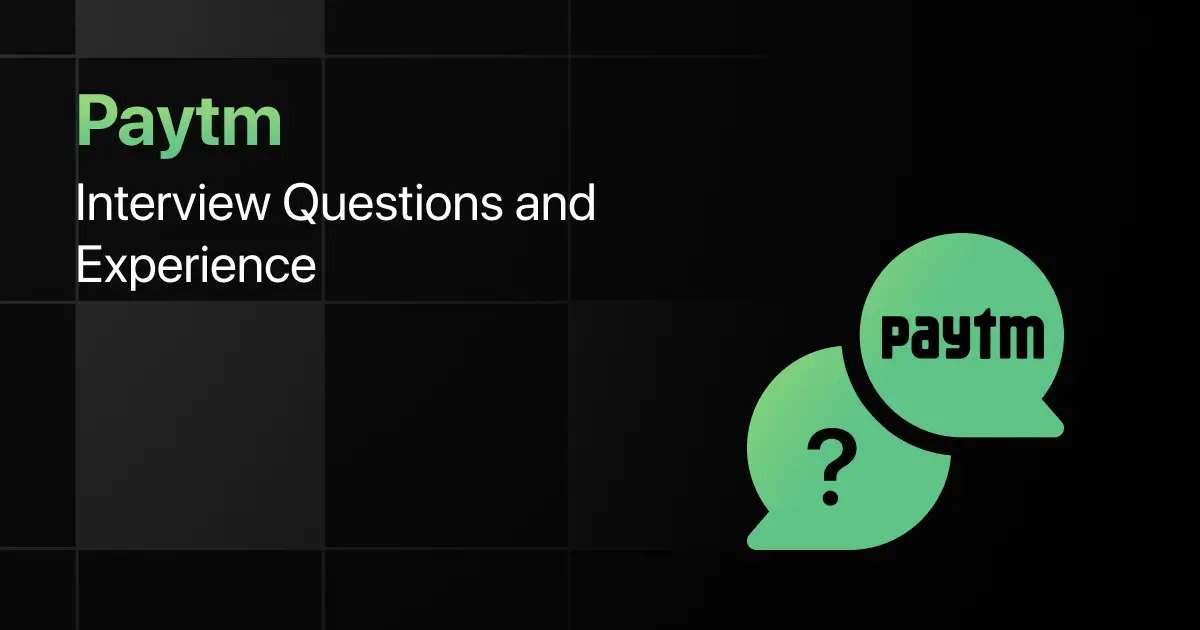

Paytm Interview Questions and Experience
Preparing for a Paytm interview requires a clear understanding of the company’s hiring process, the type of questions asked, and …
Warning: Undefined variable $post_id in /var/www/wordpress/wp-content/themes/placementpreparation/template-parts/popup-zenlite.php on line 1050


